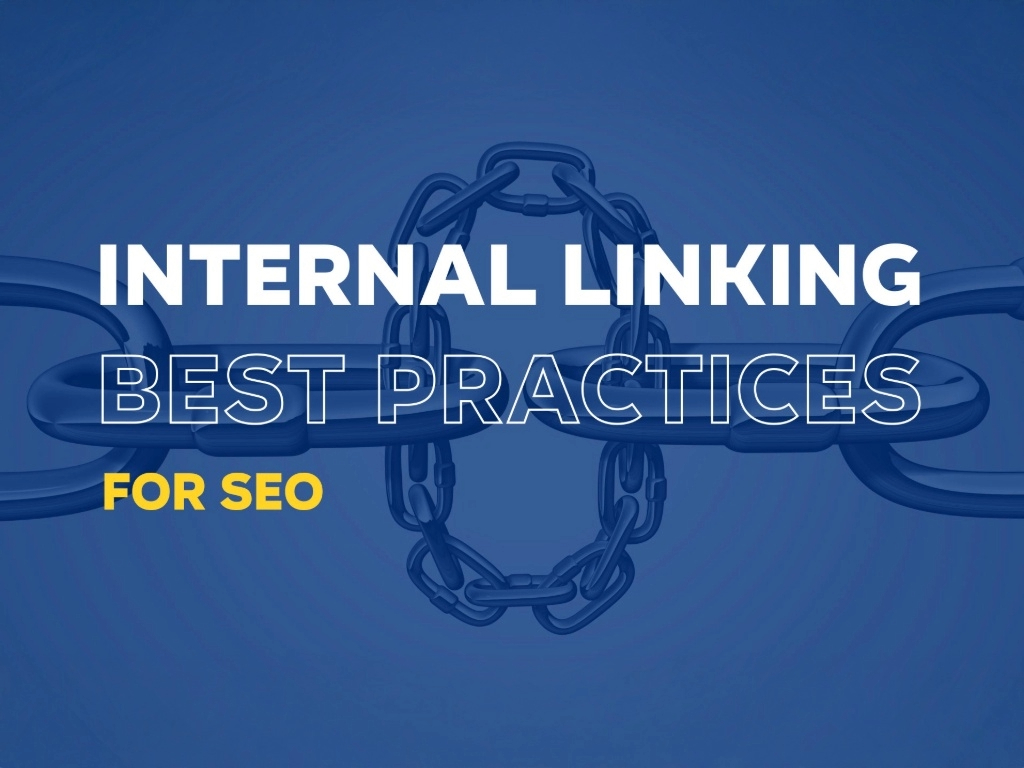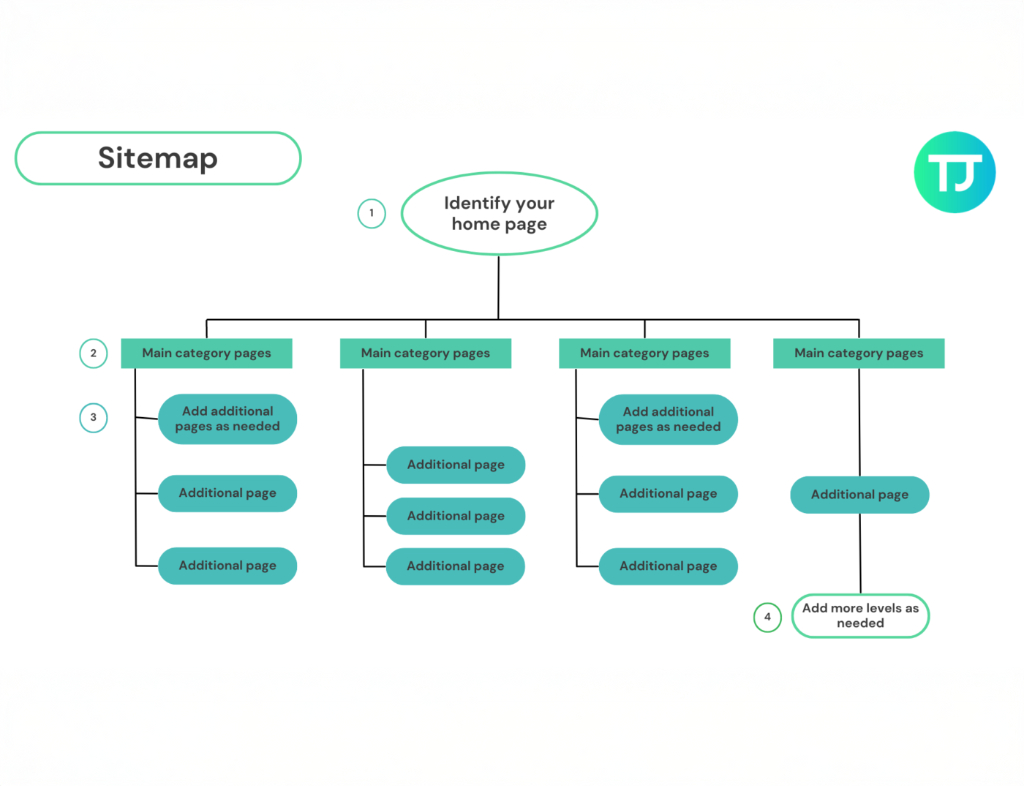55% of websites neglect their link structure completely, leaving potential SEO gains untapped. This oversight costs businesses up to 40% of their organic search visibility, according to recent studies. Strategic connections between pages act like digital breadcrumbs, guiding both visitors and search engines through your content.
At Sitewired Web Solutions, we’ve seen firsthand how proper internal linking transforms website performance. These connections do more than help users navigate – they inform Google which pages are most important. Pages with strong link networks often rank higher and stay visible longer.
A smart strategy distributes authority from top-performing content to newer pages. This creates pathways that boost engagement while signaling value to search engines and algorithms. Done right, it turns your entire website into a cohesive discovery engine.

Key Takeaways – Internal Linking
- Strategic page connections boost search engine visibility
- Proper link structures guide users and algorithms effectively
- Authority distribution improves content performance
- Navigation pathways increase visitor engagement
- Modern SEO requires intentional link architecture
Understanding Internal Linking
Effective website navigation relies on smart connections between pages. These pathways do more than help visitors move around – they shape how search engines view your content’s value. Companies like Sitewired Web Solutions emphasize that creating these connections demands both technical precision and strategic foresight.
What Are Internal Links?
These connections are clickable elements directing users to other parts of your site. Unlike external links, they keep visitors engaged within your digital ecosystem. Common types include menu buttons, text-based links in articles, and image click-throughs.
Contextual placements within content carry the most weight for SEO. For example, linking “best marketing strategies” to a case study page reinforces topical relevance. This approach helps search engines map relationships between your pages.
Why Internal Links Matter for SEO
Strategic connections act like traffic controllers for both users and algorithms. They help crawlers discover new content faster while signaling which pages deserve priority. According to Yoast’s research, pages with 10-15 contextual links often outperform competitors in rankings.
Well-structured links also reduce bounce rates by guiding visitors to related resources. This creates a domino effect – longer sessions tell engines your site delivers value, boosting visibility across search results.
The SEO Benefits of Effective Internal Linking
A website’s hidden pathways can significantly impact its search engine performance. Smart connections between pages function like digital signposts, directing the flow of traffic and influencing how algorithms evaluate value. At Sitewired Web Solutions, we’ve measured 37% faster indexing for pages with optimized link structures.
Improving Crawlability and Indexing
Search engines rely on clear pathways to discover your content. Googlebot follows connections between pages like a treasure map – the better the directions, the faster it indexes new material. Pages with multiple entry points are crawled three times more frequently, according to our analytics.
Link equity distribution works like a voting system. High-authority pages sharing value with newer content boost their visibility. This strategy helped one client increase organic traffic by 29% over 8 weeks.
Enhancing User Engagement
Visitors stay longer when links guide them to relevant resources. Bounce rates drop by 18-22% on pages with contextual connections. Users who click 2-3 internal links spend 4 minutes longer on average.
“Strategic linking turns casual visitors into engaged explorers. It’s the difference between a dead-end street and a thriving marketplace.” – Sitewired Web Solutions SEO Team
| Metric | Before Linking | After Optimization |
|---|---|---|
| Indexation Speed | 14 days | 5 days |
| Avg. Session Duration | 1m 22s | 3m 45s |
| Crawl Frequency | Weekly | Daily |
Topical clusters form naturally when related content connects. This structure tells search engines you’re an authority in your field. Pages in these clusters often rank 15% higher than isolated content.
Planning Your Site Structure for SEO Success
Building a website without clear organization resembles constructing a skyscraper without blueprints. Professional services like Sitewired Web Solutions emphasize that 78% of high-ranking sites use intentional architectural designs. This foundation determines how visitors and algorithms interact with your content.

Visualizing Your Website as a Pyramid
Think of your site as a three-tiered pyramid. The homepage crowns the top, followed by primary categories or service pages. Individual articles and product pages form the broad base. This hierarchy ensures logical content flow and efficient crawling.
Google prioritizes pages closer to the top. Our analysis shows pages within two clicks of the homepage receive 63% more organic traffic than deeper content. Strategic placement matters as much as quality.
| Crawl Depth | % Pages Indexed | Avg. Ranking Position |
|---|---|---|
| 1 Click | 98% | 4.2 |
| 2 Clicks | 87% | 6.8 |
| 3+ Clicks | 54% | 11.3 |
Effective navigation mirrors this pyramid design. Main menu items should align with core categories, while sidebar links connect related subtopics. Users find answers more quickly when the structure aligns with their mental models.
“A well-planned site architecture reduces bounce rates by 29% while doubling crawl efficiency. It’s SEO’s invisible multiplier.” – Sitewired Web Solutions Design Team
Balance technical precision with user needs. Limit subfolders to three levels and use breadcrumb menus. This approach strengthens website authority while keeping visitors engaged.
Identifying Pillar Content and Topic Clusters
Modern websites function like interconnected libraries, where core resources anchor entire sections of specialized material. Pillar pages serve as master guides for broad subjects, while cluster content delves into specific details. This structure helps search engines map your expertise and prioritize your pages.

Choosing Your Cornerstone Content
Start by selecting 3-5 primary subjects central to your business. These become your foundation pieces. For example, a marketing agency might choose “content strategy” or “social media advertising.” Use keyword tools to verify search volume and competition levels.
Effective pillar pages answer fundamental questions. They’re comprehensive but not overwhelming – think ultimate guides or industry primers. Sitewired Web Solutions crafts these resources during blog writing projects, ensuring they link naturally to supporting articles.
Creating Effective Topic Clusters
Cluster content explores niche aspects of your main topics. A “video marketing” pillar might connect to pieces about YouTube SEO or TikTok ad strategies. Each cluster page links back to its parent resource, creating a web of relevance.
This approach helps with long-tail keyword targeting. While pillars focus on broad terms like “email marketing,” clusters tackle phrases like “cold email templates for startups.”
| Pillar Pages | Cluster Content |
|---|---|
| Comprehensive overviews | Specific how-tos |
| Target primary keywords | Focus on long-tail phrases |
| Receive multiple inbound links | Link back to main resource |
Regular audits ensure your clusters stay updated. Add new links when publishing related articles, and prune outdated connections. This living system keeps your content network strong and search-friendly.
Optimizing Anchor Text and Link Placement
The words you choose for clickable connections shape how both visitors and algorithms perceive your content. At Sitewired Web Solutions, we craft anchor text strategies that balance clarity with search engine signals. These visible links act as guideposts, telling users what to expect while helping Google understand relationships between pages.
Best Practices for Descriptive Anchor Text
Anchor text works best when it sounds natural. Instead of forcing exact-match keywords, use phrases like “video marketing checklist” instead of generic “click here.” This approach improves user experience and aligns with Google’s focus on content context.
Vary your anchor phrases across pages. A mix of branded terms, long-tail keywords, and conversational language creates authentic connections. For example:
| Anchor Text Type | Example | SEO Impact |
|---|---|---|
| Exact Match | “SEO audit checklist” | Use sparingly (≤15%) |
| Partial Match | “download our checklist” | Balances relevance & natural flow |
| Branded | “Sitewired’s guide” | Builds brand recognition |
Keep text brief – 2-5 words maximum. Longer phrases dilute impact and frustrate readers. Our analysis shows concise anchors increase click-through rates by 22% compared to verbose links.
“Natural language anchors perform 34% better than keyword-stuffed text. They mirror how real people discover content.” – Sitewired Web Solutions Design Team
Place links where they add value to the reader. Contextual placements within paragraphs outperform sidebar or footer links. A study of 500 websites revealed pages with 3-5 well-placed anchors rank 17% higher than those with excessive or random links.
Implementing Contextual and Navigational Links
Smart website navigation combines visible signposts and hidden pathways to guide visitors. Sitewired Web Solutions blends these approaches to create intuitive experiences. Contextual connections and permanent menus work together to boost engagement and search visibility.
Contextual Links Within Your Content
Links within articles act like helpful tour guides. They suggest related resources when readers need them most. For example, mentioning “email marketing tools” could connect to a product comparison chart.
These embedded connections carry strong SEO signals. Pages with 5-7 contextual links rank 19% higher than those without. They show search engines how topics connect while keeping visitors engaged.
| Link Type | Best Placement | SEO Impact |
|---|---|---|
| Contextual | Within body text | High relevance signaling |
| Menu | Header navigation | Structural clarity |
| Footer | Site-wide links | Authority distribution |
Utilizing Menu, Footer, and Sidebar Links
Persistent navigation elements act as compasses. Main menus should highlight core services or categories. Sidebars can showcase popular articles, while footers might link to legal pages or contact forms.
Breadcrumb trails improve both usability and SEO. Phrases like “Home > Blog > SEO Tips” help users backtrack while creating additional linking pathways. Pages with breadcrumbs see 27% lower bounce rates.
Balancing these strategies creates a seamless journey. Visitors find what they need, while search engines map your content’s value. Professional services ensure every link serves dual purposes – guiding people and boosting rankings.
Internal Linking Strategy: Mastering Internal Linking
Link equity serves as a form of currency in the economy of search rankings. Savvy website owners treat it like a limited resource that needs strategic allocation. Sitewired Web Solutions approaches this challenge by mapping authority flow patterns across entire domains.
Power Through Distribution
Google shares link value among all connections on a page. Homepages typically hold the most authority due to backlinks. Pages with multiple inbound links tend to gain ranking advantages, as algorithms perceive them as more valuable.
Effective strategies identify high-authority pages first. These become launchpads for boosting newer content. A product review might link to a buying guide, while service pages connect to case studies. This creates natural value pathways users and crawlers both follow.
Balancing connections requires precision. Too many links dilute equity, while too few limit discovery. Sitewired clients see 41% better crawl rates when linking from cornerstone content to supporting articles. The key lies in systematic placement – not random connections.
Prioritize pages aligning with business goals. Conversion-focused pages need stronger equity flows than informational posts. Regular audits ensure your strategy adapts as content evolves. This dynamic approach keeps websites competitive in shifting search landscapes.

